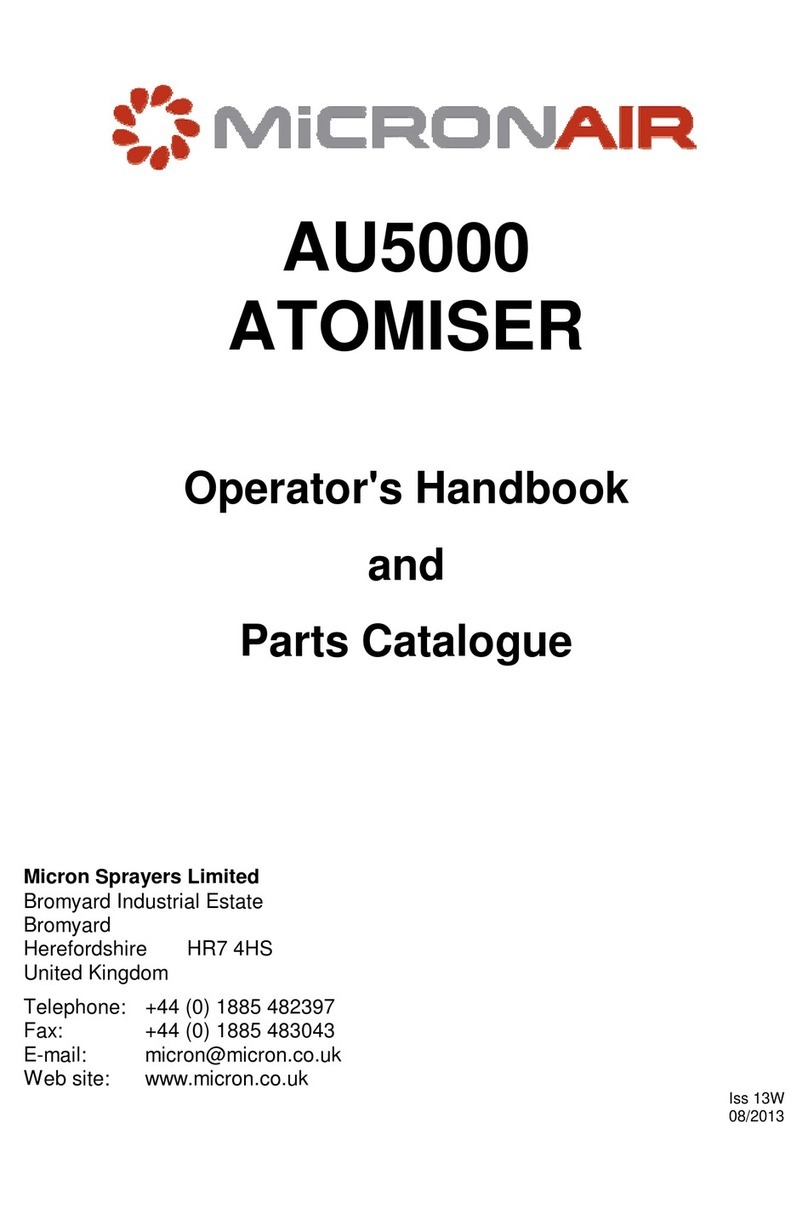
TABLE OF CONTENTS
1. INTRODUCTION...........................................................................................1
2. SPECIFICATION...........................................................................................2
2.1. Atomiser........................................................................................2
2.2. Segmental Attachment..................................................................2
2.3. Controller ......................................................................................3
3. INSTALLATION.............................................................................................5
3.1. Atomiser........................................................................................5
3.1.1. Mounting – Basic Atomiser ...................................................5
3.1.2. Mounting – with Segmental Attachment................................6
3.2. Liquid Feed ...................................................................................8
3.3. Liquid Drain...................................................................................9
3.4. Motor Venting................................................................................9
3.5. Electrical Connections.................................................................10
3.5.1. Use with Micronair Controller ..............................................10
3.5.2. Use with External Power Supply .........................................10
3.5.3. Atomiser Speed Control (Micromiser 12 Only)....................13
3.5.4. Atomiser Speed Output.......................................................14
3.6. Controller ....................................................................................15
3.6.1. Mounting .............................................................................15
3.6.2. Electrical Connections.........................................................16
3.6.2.1. Power Supply.................................................................16
3.6.2.2. Atomiser ........................................................................17
3.6.2.3. Atomiser Speed Control Input........................................17
3.6.2.4. Atomiser Enable Input ...................................................17
3.6.2.5. Atomiser Speed Control Output .....................................17
3.6.2.6. Atomiser Run Output .....................................................18
3.6.2.7. Atomiser RPM Output....................................................18
3.6.2.8. Control Ground ..............................................................18
4. OPERATION ...............................................................................................19
4.1. Atomiser......................................................................................19
4.2. Controller (Micromiser 12 Only) ..................................................19
5. CALIBRATION ............................................................................................20
5.1. Flow Rate....................................................................................20
5.2. Spray Droplet Size ......................................................................21
6. MAINTENANCE ..........................................................................................23
6.1. Routine maintenance – Atomiser ................................................23
6.2. Routine maintenance – Controller...............................................24
6.3. Fault Finding ...............................................................................25
7. PARTS LISTS .............................................................................................27
7.1. Micromiser Atomiser ...................................................................27
7.2. Controller ....................................................................................27
7.3. Cable Assembly ..........................................................................27
7.4. Segmental Attachment................................................................28




























